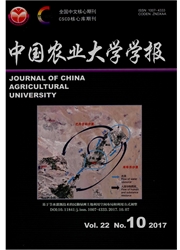

 中文摘要:
中文摘要:
积温是评估区域热量资源和测算生长发育进程的重要指标,准确计算日积温是作物模型中有效模拟和预测作物生长发育进程和科学调控田间水肥管理的基础。本研究基于生物生长发育速率对温度的线性假设和日极端温度论述了目前流行的2种日积温模型的利弊,并在正弦模拟温度日变化计算小时温度的前提下,引进以时积温改进日积温模型的方法。首先从理论上论述了日均温法可能导致真正的日积温被高估或低估和日极值法可能高估日积温,然后以实例分析和论证了3种日积温模型与真正的日积温间的差异,得出时积温方法计算日积温误差相对最小的结论。为准确估算日积温,建议基于线性假设和日极端温度计算日积温时采用这种时积温方法。
 英文摘要:
英文摘要:
Growing degree-day (GDD) is an important indicator for assessing regional heat resources and timing phenol- stage process, and correct GDD calculation is the basis of water and fertilizer management in agricultural production and accurate simulation and prediction of crop growth and development in crop models. In this paper, two popular methods of calculating GDD based on assumption of linear response of growth and development to temperature (LR assumption) and daily extreme temperatures were reviewed, and a growing degree-hour (GDH) method of calculating growing degree-days was introduced. Hourly temperature was estimated by diurnal temperature curve simulated by sine wave based on extreme temperatures. Theoretical argument showed that daily average temperature method may result in an over-or under-estimated GDD, and daily extreme temperatures method may result in an over-estimated GDD; Case study showed the GDH method had the smallest error comparing with the true GDD in three methods. To calculate accurately GDD,GDH method is recommended strongly when GDD is calculated by extreme temperatures based on LR assumption.
 同期刊论文项目
同期刊论文项目
 同项目期刊论文
同项目期刊论文
 期刊信息
期刊信息
